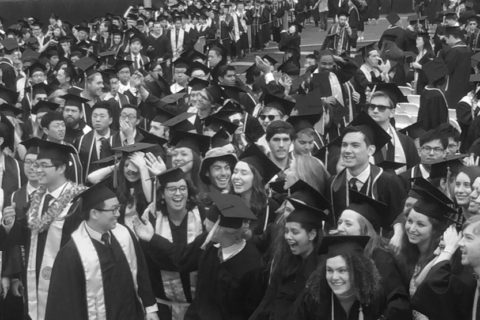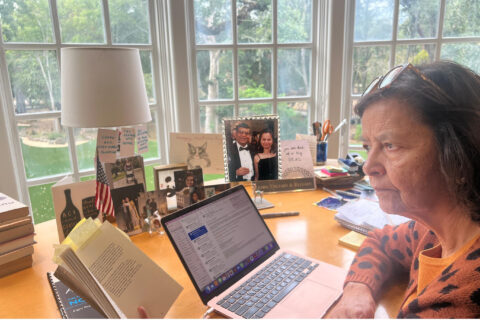
Continued learning is a lifelong pursuit. It is simultaneously stimulating and frustrating because it is imprecise. Neuroscience and brain imaging reveal that new neurons get produced in the brain, even at later stages of life — but at a slower pace — enabling us to form new connections and keep learning indefinitely.
Understanding difficult concepts and mastering a new skill may be hard, but persistence usually pays off once things begin to gel. This happens when music and comedy flow and when the face in the painting begins to look like the real person.
We discover that, at times, taking a break and returning to the problem allows solutions to emerge, or, when we get up the next morning, new thinking has evolved, which was not in our heads when we went to bed.
What’s most critical to learning, however, is the focus and hard work over years and decades: 10,000 hours of deliberate practice, says Malcolm Gladwell in his bestseller Outliers.
But what is deliberate may be too complex to get our arms around.
Biologically, the brain has an uncanny ability to fill in the blanks with real and imaginary stuff. The signals generated are fuzzy; then, the brain crystallizes them, and they appear sharp and clear. Mistakes still happen, however.
At best, the brain is a flawed organ, which tends to optimize to save energy. Evolutionarily, it also wants to learn and make sense of the world around us. In this process, we tell ourselves stories e.g., God is the creator of the universe or that slaves were lesser humans — until proven wrong.
We have heard of the invisible gorilla experiment. Half of the TV viewers actually missed the flashing image of a gorilla thumping its chest when they were asked to count the number of passes between three basketball players wearing white.
At other times, the brain seems to register things we fail to notice. Magicians trick us with the power of suggestion. They choose a person from the audience, who picks a card from a face-up card-deck, while the magician is blindfolded. The brain of the person selected has been primed with the story of the queen, the wife of the ruler of Heartsfield, and magically reaches out for the Queen of Hearts!
There is a lot more to learning.
I remember sitting in the sun during summers in India while preparing for my college electromagnetic theory exam (a subject in Electrical Engineering) — deliberately forcing myself to stay attentive by making myself uncomfortable.
Similarly, I devised a strategy to memorize chemical compound properties for my high school chemistry exam. I would create a word by stringing one letter of each property, which would resemble a word I was familiar with — easier to remember. With this map in my head, I was able to recall many properties of 20 different compounds in the exam.
Later in life, at the age of 60, I pushed myself to learn and won a few championships in the game of bridge. I felt the neurons in the brain behave much like physical muscles:
- Bridge coaches will tell you to build bridge muscles by playing regularly and for long periods. Golf teachers use “muscle memory” for the same phenomenon (use it or lose it, as they say).
- All serious bridge players devise their own warm-up routines. I do sudoku before the game time and ask my coach to give me a couple of bridge puzzles to fire up the bridge brain.
We still have not talked about mindfulness needed in bridge, as in other sports where one has to perform.
What invokes creativity is also puzzling. I painted the scenery of the Golden Gate Bridge of San Francisco, with the hills, the skies, and the water and hung it on the wall. After staring for months, I disliked the way the water looked. Recently, I picked up a bold brush, mixed bold colors and started applying. It got worse. In frustration, I wiped off chunks of paint and tried rounder strokes of color in the wiped out areas. Waves got formed and the artwork became alive.
This was not normal hard work but creativity.
Life-long learning has a cumulative effect. Charlie Munger calls Warren Buffet a learning machine, for example. We all can be learning machines by refining our thinking through self-reflection:
- Challenging the brain with inverse thinking, i.e., thinking about how to fail rather than how to succeed. It is then we learn what not to do — much easier to grapple.
- Dis-engaging autopilot mode, or deliberately breaking the routine. I might start the day by brushing my teeth with the other hand, or not reach out for the usual tea, the first thing in the morning.
We may not understand the mechanics of the brain, but we learn to learn through our own experiments and experiences.
After we have toiled long enough, a time comes when athletes, bridge players, stock-pickers, and musicians deliver peak performances. Poets, writers, and artists feel inspired to be creative, and scientists and inventors experience the ah-ha! moment of their discoveries.








Vijay Gupta
A great post.
Some of the true sources of joy in life are:
*learning something new
*creating something new (new for you)
*helping someone else learn or create something new
Our interests in learning also evolve with age. I used to dislike chemistry and biology in high school (I was a math and physics type of student). But now I find biology, especially human physiology, very fascinating. Not to mention the fact that it helps me understand my body and maintain my health better.
Similarly, I used to dislike the (mandatory) learning of Sanskrit in Indian schools. But now I find it quite fascinating. For instance, it helps me translate and interpret many verses of Bhagavad Gita on my own. (Note: Many publicly available translations of popular Sanskrit texts can be quite inaccurate because very few translators in the world are masters of both Sanskrit and English.) It also gives me great pleasure to learn the cultural roots of many common Hindi words. My favorite example is अतिथि which, in Sanskrit and Hindi, means a guest but, in Sanskrit, also means one who has no fixed तिथि (date) for coming. As we all know, guests in India are/were expected to show up without a fixed date or time.
The nice thing about learning complex subjects like human physiology, health/medicine, or a new language is that you are never done learning. It is a lifelong pursuit and a lifelong source of joy.
vinitagupta
Equally enjoyed reading your experiences, Vijay. Thanks.
Deepka Lalwani
Well said
Balakrishna (Bala) Joshi
Good blog Vinata,
Recently read Professor Cal Newport’s book on learning. He says when it comes to learning, the work Accomplished = Time * Intensity * Quality
Conquering procrastination to learn, having a strong vision of value as motivator for our reading/learning are some the points I would like to bring up.
Teaching what we learn is another major contributor to our own learning.
Anyways, great blog.
/Thanks
Bala
Pradeep Vaish
Excellent writeup Vinita.
Enjoyed it very much. It is very relevant now that we do several career changes in our lifetimes. Also important as we age and live longer.
Keep it up.
Pradeep Vaish
vinitagupta
Thanks
Venktesh Shukla
Loved Your suggestions – figuring out how to fail and changing the routine. Will get my start ups to do the “how to fail” exercise. Great insight.